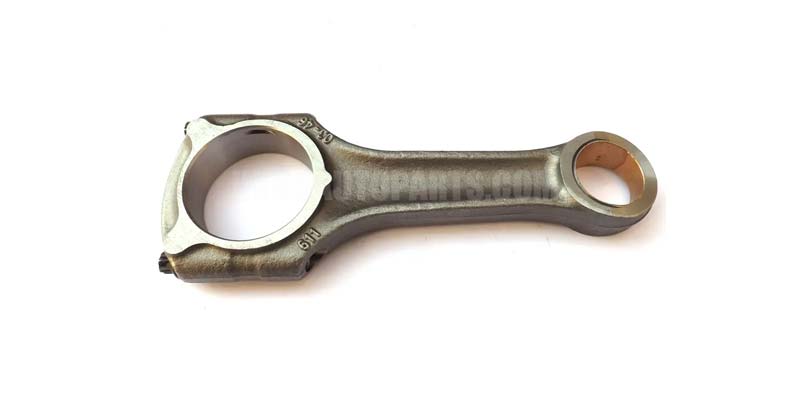- Contact Innally, Let you purchase forgings in China more favorable prices, products more assured!
- Hotline:+(86)15038323776 Email:innally@innally.com
Quality inspection standard of automobile connecting rod forgings
- Category: Automotive forgings, Titanium alloy forging
- |
- Date: 03/01/2024
the quality testing standards of automobile connecting rod forgings include dimensional accuracy testing, material performance testing, surface quality testing, non-destructive testing and fatigue performance testing. In order to ensure the quality and reliability of connecting rod forgings, manufacturers should follow relevant standards and adopt advanced testing equipment and testing methods for quality testing.
Product Details
In the automobile manufacturing industry, the connecting rod forging is a key component, and its quality inspection is very important. This paper will deeply discuss the quality inspection standards of automobile connecting rod forgings to ensure their performance, safety and durability.
First, dimensional accuracy detection
Dimensional accuracy is one of the important indexes to measure the quality of connecting rod forging. The forging of connecting rod will go through multiple processes in the production process, which may produce dimensional errors. In order to ensure the matching accuracy of connecting rod forgings with other parts, dimensional accuracy testing is needed. The inspection includes key dimensions such as the length, width, thickness and associated aperture of the connecting rod to ensure that it meets the design requirements.
Second, material performance testing
Material properties are one of the key factors that determine the quality of connecting rod forging. In order to ensure that connecting rod forgings can withstand high mechanical and impact loads, material properties testing is required. The test content includes the mechanical properties of the material such as tensile strength, yield strength and elongation, as well as the physical and chemical properties of the material such as chemical composition and metallographic structure.

Third, surface quality detection
Surface quality is one of the important factors affecting the durability and frictional properties of connecting rod forgings. In order to ensure the surface quality of connecting rod forgings, surface quality inspection is necessary. The inspection content includes surface roughness, surface defects, surface treatment, etc., to ensure that it meets the design requirements and relevant standards.
- Non-destructive testing
Nondestructive testing is one of the important means to ensure the internal quality of connecting rod forgings. Due to the possibility of internal cracks, pores and other defects in the production process of connecting rod forgings, non-destructive testing is needed. Detection methods include ultrasonic detection, magnetic particle detection, X-ray detection, etc., to detect the internal defects and problems of connecting rod forgings, and carry out corresponding treatment and repair. - Fatigue performance detection
Fatigue performance is one of the important indexes to measure the resistance to fatigue fracture of connecting rod forgings under cyclic load. In order to ensure that the forging of the connecting rod will not have fatigue fracture during long-term use, it is necessary to conduct fatigue performance testing. The testing methods include fatigue test, stress corrosion test, etc., to evaluate the fatigue life and reliability of connecting rod forgings.
To sum up, the quality testing standards of automobile connecting rod forgings include dimensional accuracy testing, material performance testing, surface quality testing, non-destructive testing and fatigue performance testing. In order to ensure the quality and reliability of connecting rod forgings, manufacturers should follow relevant standards and adopt advanced testing equipment and testing methods for quality testing. At the same time, manufacturers should also establish a sound quality management system, strengthen quality control and safety management, to ensure that the production of connecting rod forgings meet the relevant standards and customer requirements.
nannan
INNALLY mainly provides you with various types of cast and forged parts products. Welcome your inquiries! innally@innally.com
Related Products
Search
Forging center
- Steel forgings
- Aluminium alloy forging
- Titanium alloy forging
- Stainless steel forging
- Copper forging
- Automotive forgings
- Locomotive forging
- Bicycle forgings
- Motorcycle forging
- Rigging and fasteners
- Bearing forging
- Electric power fittings
- Marine forging
- Mechanical forgings for metalworking
- Mining machinery forgings
- Marine engineering forgings
- Construction machinery forgings
Popular product

© 2025. All Rights Reserved.






